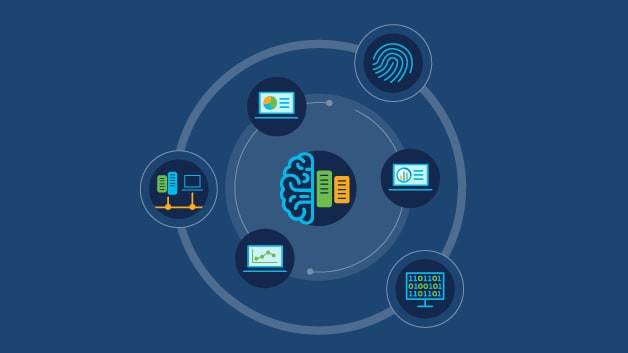
We will be discussing the characteristics and application of sequence models in this article. We will discuss their architectures, loss functions, and characteristics. In this section, we'll also discuss the use and limitations of sequence models for machine translation. These algorithms can be useful for a wide range of purposes, from image captioning to the translation of single-language inputs. Continue reading to learn more about these models and their potential for machine translation, as well as other data mining tasks. Let's start with some examples.
Applications of sequence models
Sequential data is the combination of input and output data in sequence model models. Audio and video clips, text streams and time-series are all common examples. The input is used to create sequence models that classify sentiment. The most popular sequence model, the recurrent nerve network (RNN), has been proven highly effective in processing data in sequential sequences. Read on to find out how sequence models can benefit your business.

Sequence model characteristics
Different sequence models can be used for different purposes. Some models can be used to classify sequences, such as images or words. Some can predict the outcome to a specific action. Sequence models are useful for analysing data from multiple sources, such audio clips or videos. A popular sequence model that is used to process sequential data is the recurrent neuro networks (RNNs). These are some of the characteristics of sequence models.
Architectures of sequence models
In order to understand how neural networks model the world around us, we need to consider the various architectures of sequence models. One common architecture is to use bidirectional LSTMs that simultaneously process vertical and horizontal axes. Parallel processing enhances efficiency and accuracy. The final result is a spatially relevant receptive field. What architecture is best suited for what task? It all depends on the application and what the task is.
Loss functions in sequence models
An example of a loss function is one that computes error by comparing predicted values with the real numbers. The error propagates backwards during training. Seq2Seq models require that the training phase be performed on sequences which do not contain labeled answers. Cross-entropy between the input sequences and the output sequences should be minimized during the training phase. The decoder generates the output sequences only after it has received training.

To improve performance, use attention-based models
A new type of neural network model is emerging, which can increase the performance and efficiency of machine learning systems. This model employs recurrent awareness over external memory. It is used for producing a response based upon a query as well as a set inputs that are stored in memory. This technique uses several attention mechanisms to maximize performance by focusing on particular elements of a task. Here are some of the most popular examples:
FAQ
From where did AI develop?
Artificial intelligence began in 1950 when Alan Turing suggested a test for intelligent machines. He stated that a machine should be able to fool an individual into believing it is talking with another person.
The idea was later taken up by John McCarthy, who wrote an essay called "Can Machines Think?" John McCarthy published an essay entitled "Can Machines Think?" in 1956. He described the problems facing AI researchers in this book and suggested possible solutions.
What can AI do for you?
AI has two main uses:
* Prediction - AI systems are capable of predicting future events. AI systems can also be used by self-driving vehicles to detect traffic lights and make sure they stop at red ones.
* Decision making-AI systems can make our decisions. For example, your phone can recognize faces and suggest friends call.
What's the status of the AI Industry?
The AI industry is growing at an unprecedented rate. There will be 50 billion internet-connected devices by 2020, it is estimated. This will enable us to all access AI technology through our smartphones, tablets and laptops.
This means that businesses must adapt to the changing market in order stay competitive. If they don't, they risk losing customers to companies that do.
Now, the question is: What business model would your use to profit from these opportunities? What if people uploaded their data to a platform and were able to connect with other users? Perhaps you could offer services like voice recognition and image recognition.
No matter what you do, think about how your position could be compared to others. Although you might not always win, if you are smart and continue to innovate, you could win big!
What countries are the leaders in AI today?
China is the leader in global Artificial Intelligence with more than $2Billion in revenue in 2018. China's AI industry is led by Baidu, Alibaba Group Holding Ltd., Tencent Holdings Ltd., Huawei Technologies Co. Ltd., and Xiaomi Technology Inc.
China's government invests heavily in AI development. The Chinese government has established several research centres to enhance AI capabilities. These centers include the National Laboratory of Pattern Recognition and State Key Lab of Virtual Reality Technology and Systems.
Some of the largest companies in China include Baidu, Tencent and Tencent. All of these companies are currently working to develop their own AI solutions.
India is another country where significant progress has been made in the development of AI technology and related technologies. India's government is currently focusing their efforts on creating an AI ecosystem.
What does the future hold for AI?
Artificial intelligence (AI), the future of artificial Intelligence (AI), is not about building smarter machines than we are, but rather creating systems that learn from our experiences and improve over time.
This means that machines need to learn how to learn.
This would allow for the development of algorithms that can teach one another by example.
We should also look into the possibility to design our own learning algorithm.
Most importantly, they must be able to adapt to any situation.
How will governments regulate AI
Although AI is already being regulated by governments, there are still many things that they can do to improve their regulation. They need to make sure that people control how their data is used. They must also ensure that AI is not used for unethical purposes by companies.
They should also make sure we aren't creating an unfair playing ground between different types businesses. A small business owner might want to use AI in order to manage their business. However, they should not have to restrict other large businesses.
Statistics
- By using BrainBox AI, commercial buildings can reduce total energy costs by 25% and improves occupant comfort by 60%. (analyticsinsight.net)
- That's as many of us that have been in that AI space would say, it's about 70 or 80 percent of the work. (finra.org)
- A 2021 Pew Research survey revealed that 37 percent of respondents who are more concerned than excited about AI had concerns including job loss, privacy, and AI's potential to “surpass human skills.” (builtin.com)
- The company's AI team trained an image recognition model to 85 percent accuracy using billions of public Instagram photos tagged with hashtags. (builtin.com)
- In 2019, AI adoption among large companies increased by 47% compared to 2018, according to the latest Artificial IntelligenceIndex report. (marsner.com)
External Links
How To
How to Setup Google Home
Google Home is a digital assistant powered by artificial intelligence. It uses advanced algorithms and natural language processing for answers to your questions. Google Assistant can do all of this: set reminders, search the web and create timers.
Google Home is compatible with Android phones, iPhones and iPads. You can interact with your Google Account via your smartphone. You can connect an iPhone or iPad over WiFi to a Google Home and take advantage of Apple Pay, Siri Shortcuts and other third-party apps optimized for Google Home.
Google Home is like every other Google product. It comes with many useful functions. It will also learn your routines, and it will remember what to do. So, when you wake-up, you don’t have to repeat how to adjust your temperature or turn on your lights. Instead, all you need to do is say "Hey Google!" and tell it what you would like.
These steps are required to set-up Google Home.
-
Turn on Google Home.
-
Hold down the Action button above your Google Home.
-
The Setup Wizard appears.
-
Select Continue
-
Enter your email and password.
-
Select Sign In.
-
Google Home is now available